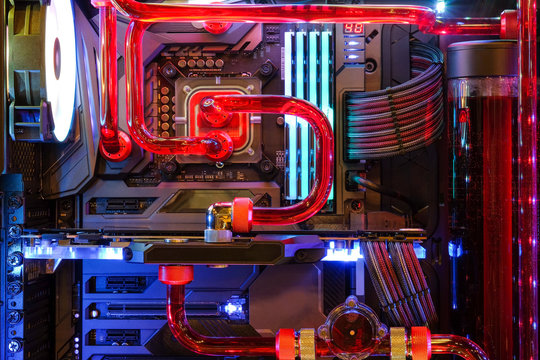Overclocking resets some computer components to run faster than the speed specified by the manufacturer. The purpose of overclocking is to increase performance. A user can overclock the processor to improve an old computer’s performance or meet new software requirements. Even new high-end devices can overclock the most demanding users, such as gamers. The processor is the most frequently overclocked part of a computer, but other components such as random access memory (RAM), motherboard chipset, and graphics card are also overclocked. This post will discuss overclocking on a PC for our readers.
The process of overclocking a processor depends on several factors. The first and most applicable step is to reset your computer’s bus speed. Resetting the bus speed may require resetting the jumpers on your computer, although on systems with SoftMenu BIOS, the bus speed can be set via the system setup interface.
Factors that support your ability to overclock successfully include a well-designed motherboard with a fast enough bus and a fan or other cooling device that will keep your system cool enough. Overclocking is not without risk because, if done to the extreme, the process can make the system unstable. Most device warranties do not apply if the problem is caused by overclocking.
The Pros and Cons of Overclocking in a PC
Overclocking is very popular among computer enthusiasts, gamers, and anyone who needs to run programs regularly that require a lot of CPU power. It can include graphic design applications, 3D modelling programs, and more. Done right; it can boost your PC performance for free. When you participate in discussions about building a computer or buying a graphics card, you will often find people talking about how easily their computers can be overclocked. Buying a cheaper overclockable graphics card can save you money while maintaining excellent performance.
However, in recent years there has been some evidence that overclocking is not as helpful as it once was. Modern processors are already running so fast that overclocking has almost no effect. More importantly, boosting your CPU performance can be a waste if the rest of your computer isn’t fast enough to keep up. It is called “troubleshooting.” For example, if you have a slow hard disk drive (HDD), overclocking your CPU may not make it faster. Likewise, programs that use your graphics card more than the CPU won’t be helping by an overclocked CPU.
Overclocking RAM comes with some inherent risks. Companies don’t ignore processor chips for fun – they do it because the chip is faulty, and using it too quickly can cause problems with your computer. Overclocking too much can cause application instability and crashes, and the occasional blue screen of death. Frequent crashes can lead to data loss and frustration. In some cases, overclocking can even permanently damage your CPU or graphics card. It would help if you weighed this risk against the performance gains, which are sometimes small, that result from overclocking. You can use overclocking software to perform overclocking.
How to Overclock your Processor
If you want to overclock your computer, check if your processor supports overclocking – not all do. Intel adds “K” or “X” to the model number of overclockable Intel Core processors. For example, the Intel Core i9-10900K can be in overclocking; The Intel Core i9-10900F can’t do that. If you have an AMD CPU, the news is even better – any “Ryzen” CPU can be in overclocking.
You should also ensure that your computer has adequate cooling equipment. Your CPU should have a powerful heatsink and a large fan. You may even want to use a liquid cooling system to deal with the extra heat generated by your faster processor. Your CPU needs better cooling if you want it to run at a higher clock speed.
To overclock the CPU, restart your computer and enter the boot menu in the computer’s UEFI or BIOS. These splash screens vary widely from manufacturer to manufacturer, so you should look for overclocking controls. It’s a good idea to increase the multiplier, restart the computer, and test. You can increase the clock speed gradually to reach the desired speed.
Every time you increase the clock speed, you spend several hours “stress testing” the computer. You can use an application like Prime95 to temporarily run the CPU at 100% load to ensure there are no computer problems. If your computer crashes, you get a blue screen of death, or your program won’t open, go back to the UEFI or BIOS menu and set a lower clock speed.
Summing Up
To summarize this discussion on what overclocking is on a PC, we have discussed almost everything about overclocking in a PC. You can read this post to know better how to perform overclocking in a PC with overclocking software.










